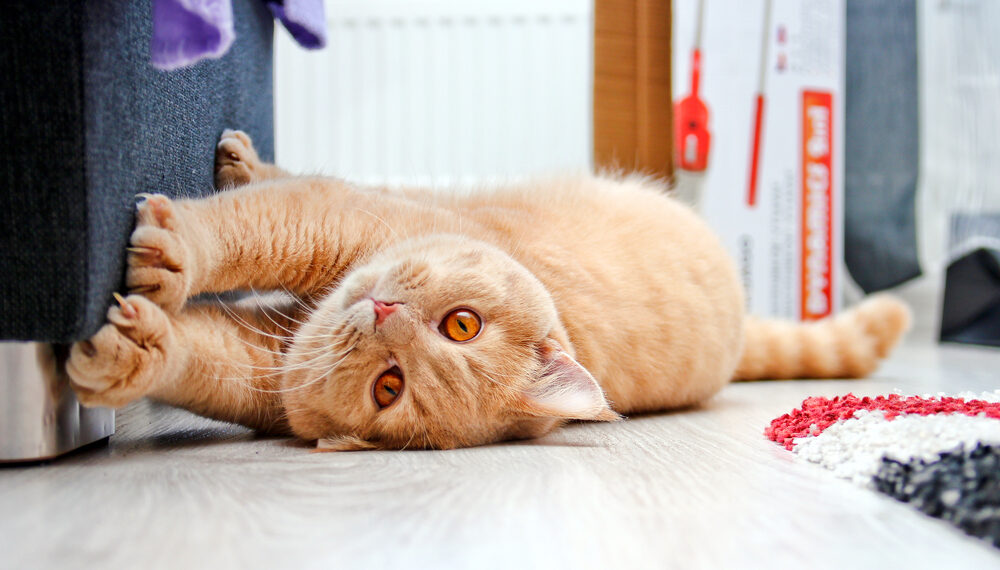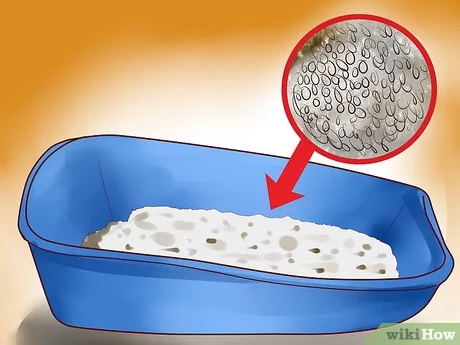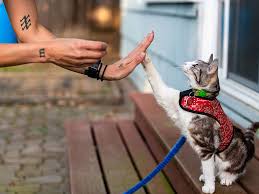Training your cat to use the litter box is one of the first challenges new cat owners face. It’s an essential skill that ensures a harmonious living environment. The process, while straightforward, requires patience and understanding of your feline friend’s behavior. Let’s dive into the steps to make this task easier and more effective.
Understanding Your Cat’s Behavior
Natural Instincts
Cats have a natural inclination to bury their waste, which stems from their wild ancestors who buried their waste to avoid detection by predators. This instinct works in your favor when training your cat to use the litter box.

Common Reasons for Litter Box Avoidance
Sometimes, cats avoid the litter box due to stress, medical issues, or an aversion to the type of litter. Understanding these reasons can help address and prevent problems during training.
Choosing the Right Litter Box
Types of Litter Boxes
There are various litter boxes available, including open, covered, and self-cleaning models. Each type has its advantages and disadvantages, depending on your cat’s preferences and your convenience.

Factors to Consider
When choosing a litter box, consider the size of your cat, the space available in your home, and how easy it is to clean. A larger box is often better, especially for bigger cats or multi-cat households.
Selecting the Ideal Location
Quiet and Private Areas
Place the litter box in a quiet, low-traffic area of your home. Cats prefer privacy when doing their business, much like humans do.

Accessibility and Convenience
Ensure the litter box is easily accessible to your cat, especially if you have a kitten or an older cat. Avoid placing it near their food and water, as cats dislike eating near their bathroom.
Picking the Right Litter
Clumping vs. Non-Clumping
Clumping litter makes it easier to remove waste, while non-clumping litter might be less expensive and more suitable for kittens. Choose based on your cat’s preferences and your cleaning routine.
Scented vs. Unscented
Some cats are sensitive to strong scents. Unscented litter is often a safer choice to avoid deterring your cat from using the litter box.

Recommendations for Different Cats
For kittens, use a non-toxic, dust-free litter. Older cats might prefer a softer, finer litter that’s gentler on their paws.
Introducing the Litter Box
Gradual Introduction
Introduce the litter box gradually. Place your cat in the box after meals and naps to encourage them to use it. Gently scratch their paws in the litter to show them how to bury their waste.
Positive Reinforcement Techniques
Reward your cat with treats and praise when they use the litter box correctly. Positive reinforcement helps them associate the litter box with good experiences.

Creating a Routine
Consistency in Timing
Establish a consistent routine for your cat. Regular feeding times can lead to regular bathroom times, making it easier to predict when your cat needs to use the litter box.
Encouraging Regular Use
Observe your cat’s behavior and gently guide them to the litter box if they seem like they need to go. Consistency and patience are key to creating a successful routine.
Handling Accidents
Immediate Cleanup
Clean up accidents immediately to remove the scent and discourage your cat from using the same spot again. Use an enzymatic cleaner to neutralize the odor completely.
Strategies to Prevent Recurrence
Identify why the accident happened and address the issue. Whether it’s changing the litter type, adjusting the box’s location, or consulting a vet, finding the root cause is crucial.
Training Kittens
Starting Early
Begin litter training as soon as you bring your kitten home. Kittens learn quickly, and early training can set good habits for life.
Special Considerations for Young Cats
Use a smaller, shallower box for kittens. Gradually transition to a larger box as they grow. Be patient and gentle, as young cats are still learning and may have more accidents.
Training Adult Cats
Addressing Habits
Training an adult cat might take longer if they have established habits. Consistency and positive reinforcement are essential in this process.
Patience and Persistence
Be patient with adult cats, as they might take longer to adapt to new routines. Consistent, gentle encouragement will eventually yield results.

Dealing with Stubborn Cats
Identifying Underlying Issues
If your cat refuses to use the litter box despite training, there might be an underlying issue such as stress, anxiety, or a health problem. Identifying and addressing these issues is crucial.
Professional Help
Consider consulting a vet or a cat behaviorist if your cat continues to have problems. Professional advice can provide tailored solutions to your cat’s specific needs.
Cleaning and Maintenance
Frequency of Cleaning
Scoop the litter box daily to keep it clean and fresh. Regular cleaning encourages your cat to use the box consistently.
Best Practices for Hygiene
Replace the litter completely and clean the box with soap and water once a week. Avoid strong-smelling cleaners that might deter your cat from using the box.
Health Considerations
Monitoring for Health Issues
Regularly check your cat’s waste for any signs of health problems, such as changes in consistency or frequency. Any abnormalities should be discussed with a vet.

Importance of Regular Vet Visits
Regular vet visits help ensure your cat’s overall health, which can affect their litter box habits. Keeping up with vaccinations and health checks is essential.
Troubleshooting Common Problems
Litter Box Aversion
If your cat avoids the litter box, try changing the type of litter, the box’s location, or the box itself. Sometimes, small adjustments can make a big difference.
Stress and Anxiety
Stress and anxiety can cause litter box issues. Provide a calm and safe environment for your cat, and consider stress-reducing products like pheromone diffusers.
Conclusion
Training your cat to use the litter box is a vital part of cat ownership. By understanding your cat’s behavior, choosing the right products, and maintaining a consistent routine, you can successfully train your cat and prevent accidents. Remember, patience and persistence are key, and with time, your cat will master using the litter box.
FAQs
What if my cat refuses to use the litter box?
If your cat refuses to use the litter box, consider possible reasons like stress, medical issues, or litter preferences. Consult a vet if the problem persists.
How often should I clean the litter box?
Scoop the litter box daily and replace the litter completely once a week. Regular cleaning helps keep the box inviting for your cat.
Can I train an older cat to use the litter box?
Yes, you can train an older cat, but it may take more time and patience. Use consistent routines and positive reinforcement to encourage them.
What type of litter is best for kittens?
Non-toxic, dust-free litter is best for kittens. Avoid clumping litter until they are older to prevent ingestion of the clumping agents.
How do I know if my cat has a health issue related to litter box use?
Watch for changes in your cat’s waste, such as frequency, consistency, or appearance. If you notice anything unusual, consult your vet for advice.





















